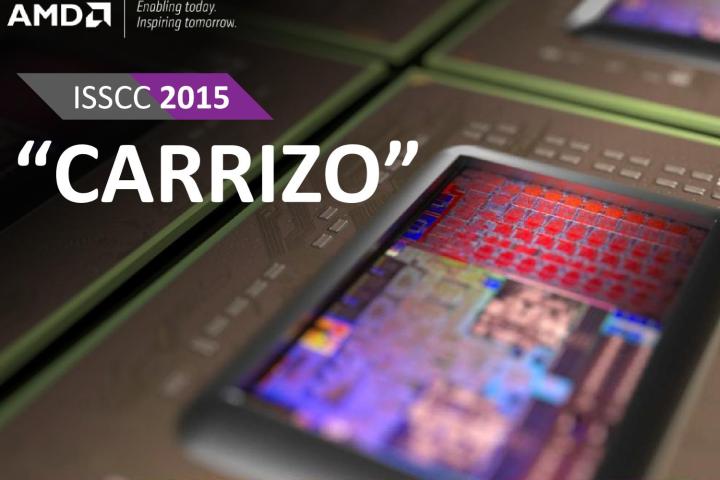
Code-named Carrizo, the chip will use the company’s latest “Excavator” x86 core, which AMD says can reduce power consumption by as much as 40 percent while increasing instructions per clock by five percent. The design is also the first “AMD high-performance APU” to integrate the Southbridge, which handles input/output functions such as USB, into the processor itself. Intel has taken the same approach since Sandy Bridge, better known as the second-generation Intel Core.
Related: AMD’s new Radeon 300 series rumored to be near the finish line
Improvements are always to be expected with new hardware, but in this case they’re made more interesting by AMD’s inability to shrink its production process. Unlike Intel, which owns its fabrication facilities, AMD has to rely on production partners, and that means the company is stuck with an outdated 28nm node. To counter this the red team’s engineers have used “high density libraries” to pack 29 percent more transistors into a similar space.
AMD is also using a number of power management techniques to extract maximum performance per-watt from the existing 28nm process. Carrizo will feature adaptive voltage for both the CPU and GPU and include special sensors that let the chip’s firmware closely monitor voltage and frequency, enabling precise adjustments to power delivery.
This is reminiscent of the techniques Nvidia used to improve the latest GTX 900 chips, though the exact engineering differs. AMD’s competitor also improved efficiency without moving to a more advanced production process.
Carrizo boasts a number of new, previously unavailable features. H.265 hardware decode is standard, giving the company an edge over Intel, which relies on software decode of H.265 in all its current chips. AMD’s own Mantle graphics API, along with DirectX 12, will be supported by the bundled Radeon graphics component. And the chip will be fully compatible with HSA 1.0, a graphics compute standard, which can provide a performance boost in compatible applications.
Related: What is H.265? Here’s everything you need to know
All these facts and figures sound great, but they unfortunately don’t mean Carrizo is right around the corner. AMD is not revealing any laptops with the new APU at this time, and the exact release date remains unknown aside from a mid-year target. Hopefully it’ll come soon enough to beat Skylake, the sixth-generation Intel Core, which is expected sometime in the late second or third quarter of this year (depending on the rumors, leaks and speculation you believe).



